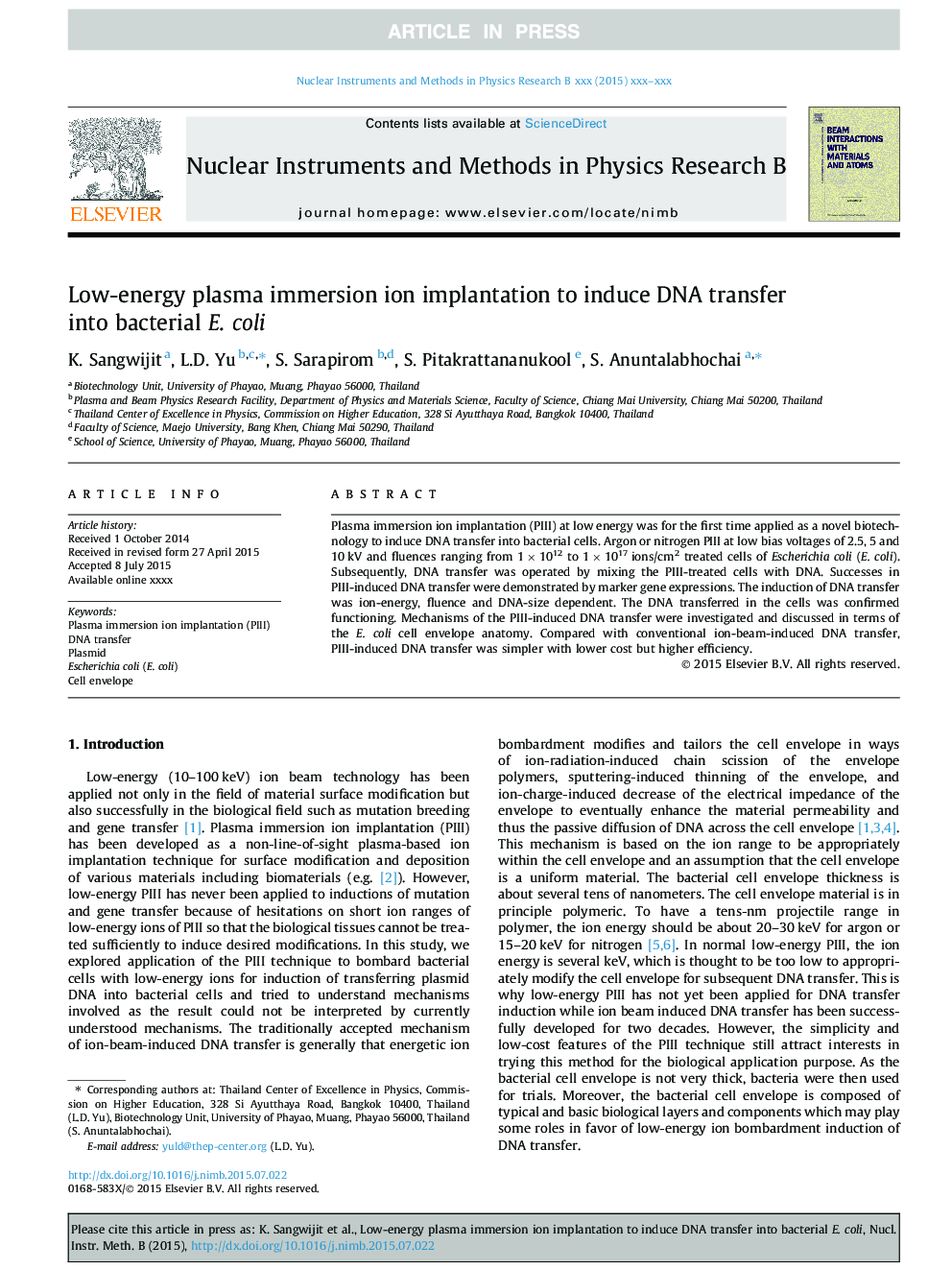| Article ID | Journal | Published Year | Pages | File Type |
|---|---|---|---|---|
| 1682453 | Nuclear Instruments and Methods in Physics Research Section B: Beam Interactions with Materials and Atoms | 2015 | 5 Pages |
Abstract
Plasma immersion ion implantation (PIII) at low energy was for the first time applied as a novel biotechnology to induce DNA transfer into bacterial cells. Argon or nitrogen PIII at low bias voltages of 2.5, 5 and 10Â kV and fluences ranging from 1Â ÃÂ 1012 to 1Â ÃÂ 1017Â ions/cm2 treated cells of Escherichia coli (E. coli). Subsequently, DNA transfer was operated by mixing the PIII-treated cells with DNA. Successes in PIII-induced DNA transfer were demonstrated by marker gene expressions. The induction of DNA transfer was ion-energy, fluence and DNA-size dependent. The DNA transferred in the cells was confirmed functioning. Mechanisms of the PIII-induced DNA transfer were investigated and discussed in terms of the E. coli cell envelope anatomy. Compared with conventional ion-beam-induced DNA transfer, PIII-induced DNA transfer was simpler with lower cost but higher efficiency.
Keywords
Related Topics
Physical Sciences and Engineering
Materials Science
Surfaces, Coatings and Films
Authors
K. Sangwijit, L.D. Yu, S. Sarapirom, S. Pitakrattananukool, S. Anuntalabhochai,
